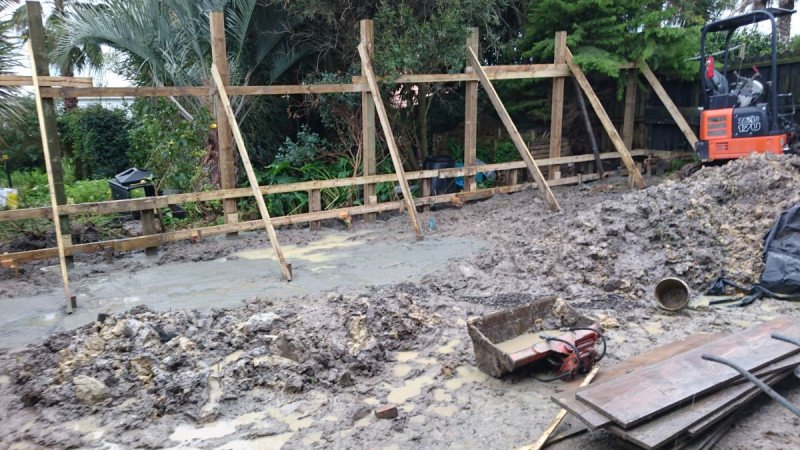Hit enter to search or ESC to close
22 July 2019
Building on solid foundations
The present construction boom has seen larger, more complex builds being taken on by a more diverse pool of companies. In a rapidly-growing sector – and against a backdrop of significant changes to the global re-insurance market – the need for New Zealand’s building and construction industry to ensure robust coverage is greater than ever.
Despite the booming New Zealand construction sector, a host of high-profile contractor insolvencies have shaken what appears to be a buoyant industry.
Mark Taylorson, Crombie Lockwood Group Broking Manager, Corporate, says these significant failures contradict a construction climate with so much opportunity in front of it.
“There are around $200 billion worth of building projects on the books for New Zealand over the next four or so years, with Auckland, Wellington and Christchurch in particular remaining buoyant, especially in the vertical build space,” he says.
“There are some unique projects on the horizon too, such as the marine and land-based infrastructure works for the America’s Cup to be held in Auckland in 2021. The companies poised to take on larger projects are generally in rude health; scale gives you a distinct advantage, but taking on large projects comes with significant risks.”
Mark says New Zealand construction entities of all sizes are challenged by skills shortages, supply chain issues and amendments to standard contract conditions between project principals and contractors.

Around $200 billion worth of NZ building projects on books for immediate future
Shifting construction risks require robust insurance
While NZ3910 remains the standard contract, there has been a trend of amendments to the risk allocation, with liability being passed from the principal back to the contractor. Whereas in the past contractors were less likely to push back on such amendments, there is now a reluctance to accept the additional risk allocation to the contractor and we have seen contractors turning down business with inequitable risk sharing.
“What we’re seeing is something of a two-speed market, where one part of the sector is well-positioned, while companies within the other part of the sector are running on razor-thin margins; any significant delay to a project could completely cripple a company,” he says.
“When you consider that currently only around 40 percent of commercial building projects in New Zealand finish on time for a multitude of reasons, the need for contractual allowances for delays is vital.”
Mark says that Crombie Lockwood’s brokers add value for construction clients by being able to study contracts and offer advice, as well as an increasing array of insurance products attuned specifically to the construction sector.
“Some time ago we asked our wider broker network for their thoughts on where more insurance product specialisation was required. Construction was top of the list in almost every region,” he says.
“It’s easy to highlight larger-scale activity in the main centres, but in the regions, there are a significant amount of construction entities who are growing very quickly; as a small company expands its resources and skill base, the jobs it can successfully tender for become more complex.
“In turn, our brokers also need to have the necessary back-up when looking at complex, high-risk contracts. A boom time for construction means we have to be very focused in how we put robust insurance products together for clients in the sector.”

Only around 40 per cent of building projects in NZ finish on time
Construction practice specialists
Crombie Lockwood brought a team of experts together to form a more cohesive approach to the construction sector. The company now has a team of 13 brokers in five offices around the country working specifically within the construction industry. Factors such as surety bonding and trade credit insurance to protect against non-payment or insolvency further up the food chain have become bigger issues Crombie Lockwood’s construction clients have to face.
Mark says that, whilst in general the construction insurance market is still very competitive there are regions of the country where we are facing challenges in terms of pricing and capacity.
“The Christchurch earthquakes impacted the global re-insurance market and forced a pricing correction; then we had the Kaikoura quake which also impacted the market both in terms of pricing and capacity availability in quake prone regions,” continues Mark.
But with changing landscapes comes the opportunity to evolve insurance products; something Crombie Lockwood is embracing wholeheartedly.
“In alignment with our global strategy, we are continually looking at how we can provide products for the construction industry that suit specific types of builds, as well as the entities building them.
Mark highlights one of Crombie Lockwood’s products due for launch later in 2019, which allows developers to offer a builder’s warranty to homeowners purchasing units in new developments.
The product is widely available oversees, yet insurers have been reluctant to offer these products in lieu of the leaky building crisis.
However, with water ingress such a fundamental part of required coverage, the Crombie Lockwood builder’s warranty product will offer leaky building cover for 10 years on new builds.
“The new building codes will hopefully mitigate the risk of an industry-damaging issue like leaky buildings from arising on such a scale in the future.
“But providing to our construction clients not only the coverage they need for the risks associated with projects, but also sound advice borne from many years working in an ever-changing sector means all parties are better prepared and boast greater contingency.”